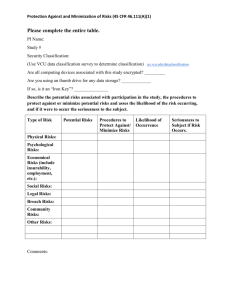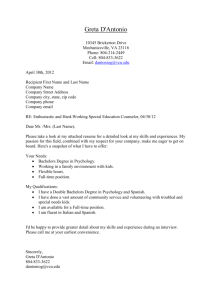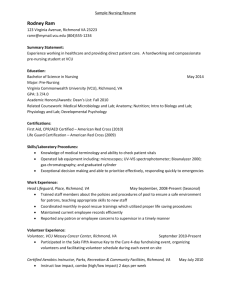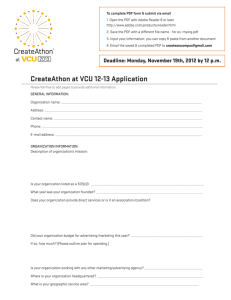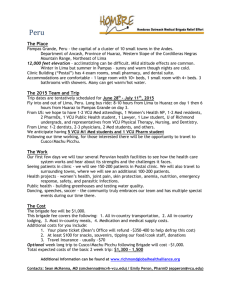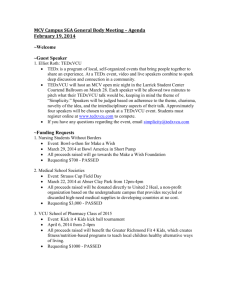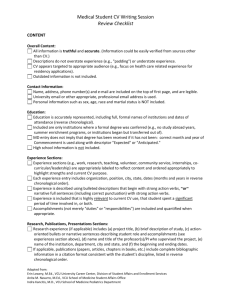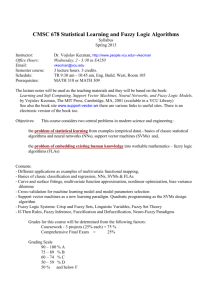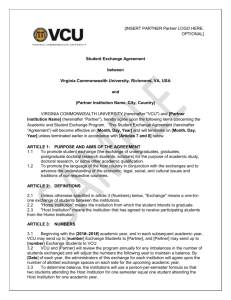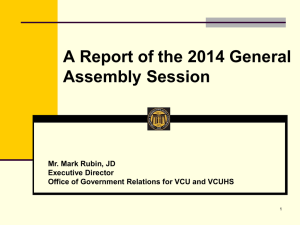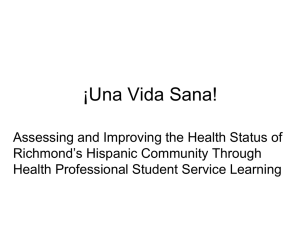Assessment and administrative burden:
advertisement
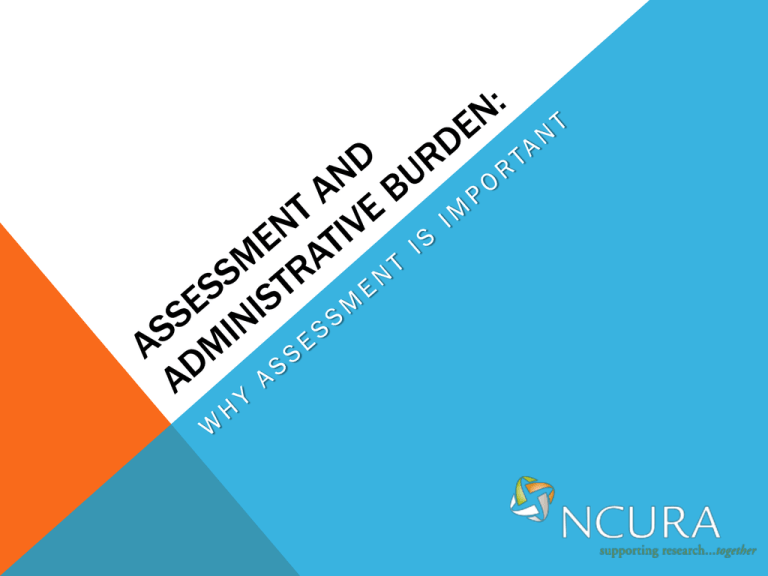
INTRODUCTIONS David Mineo Managing Director DLMineo Consulting, LLC David.mineo@dlmineo.com Brigette Pfister, MHRD, CRA Director of Sponsored Programs for Humanities & Sciences Virginia Commonwealth University bspfister@vcu.edu AGENDA • What is Administrative Burden? • What is Assessment? • Types of Assessment • Why We Do Assessments • At the Intersection of Administrative Burden and Assessment • Case Study: VCU College of Humanities & Sciences WHAT IS ADMINISTRATIVE BURDEN? ad·min·is·tra·tive of or relating to the running of a business, organization, etc. bur·den a load, especially a heavy one. Synonyms: load, weight, cargo, freight “…the baggage that comes with doing business” ADMINISTRATIVE BURDEN Administrative burdens are “costs” imposed on an organization as a direct result of government regulation. For research universities and other entities receiving federal funds, these costs represent thousands of hours spent on activity that may not directly benefit the institution or the project in question. NSB ADMINISTRATIVE BURDEN REPORT “There is now consensus that some of these requirements are interfering with the conduct of science out of proportion with the accepted need to ensure accountability, transparency and safety.” “Principal investigators (PIs) of federally sponsored research projects spend, on average, 42 percent of their time on associated administrative tasks” http://www.nsf.gov/pubs/2014/nsb1418/ns b1418.pdf NSB ADMINISTRATIVE BURDEN REPORT “The most frequently reported areas associated with high administrative workload were financial management; the grant proposal process; progress and other outcome reporting; human subjects research (IRB); time and effort reporting; research involving animals (IACUCs); and personnel management. Other areas frequently addressed were subcontracts, financial conflictof-interest (COI), training, and laboratory safety and security.” “It is imperative that these issues are addressed so that researchers can refocus their efforts on scientific discovery and translation.” WHAT IS ASSESSMENT? as·sess·ment the evaluation or estimation of the nature, quality, or ability of someone or something. Synonyms: evaluation, judgment, rating, estimation, appraisal, analysis, opinion ORGANIZATIONAL ASSESSMENT Organizational assessment is a systematic process for obtaining valid information about the performance of an organization and the factors that affect performance. It is conducted in order to demonstrate areas of competence, areas for improvement, and possible risks, help support investment and restructuring decisions. http://reflectlearn.org/discover/your-introductory-guide-to-oa THREE LEVELS OF ASSESSMENT Organizational Level Team Level Individual Level • • • • Mandated from above To find out what’s going on To help decide what to do To obtain data on a known problem PROS AND CONS OF ASSESSMENT PROS CONS Broadens perspective Pinpoints areas for improvement Can help streamline processes and eliminate waste Can help structure teams efficiently Data can be misused or improperly interpreted Can be time consuming and expensive Can add significantly to administrative burden ASSESSMENT IS A GOOD IDEA WHEN: • There are clear questions to be answered • Performance problems exist or improvements are needed • Leadership is on board • There are major decisions to be made • Long-range planning is underway • Good Return on Investment (ROI) is likely ASSESSMENT IS LESS OF A GOOD IDEA WHEN: •There aren’t clear questions to be answered •The results are unlikely to be useful (low to no ROI) •Leadership hasn’t bought into the idea Above all, assessment must be handled professionally and properly in order to be successful! CONTEXT VCU’s strategic plan is called the Quest for Distinction, aimed at distinguishing VCU as the nation’s premier public, urban, research university CHS is VCU’s largest academic unit CHS strategic planning process was aimed at articulating a candid assessment of the strengths and challenges, and an inspirational vision for the future THE ASSESSMENT PROCESS Alumni Survey 2000 responses Concept Mapping 350 participants Identified Priorities and Areas of Largest Impact Small Group Discussions Groups of 8-12 met with the Dean personally Most of the "priorities" that emerged from this process represented actions that would improve the VCU work environment and/or faculty and staff productivity RESULTS: OUR PRIORITIES A liberal arts and sciences education provides a pathway for students to a deeply meaningful and successful life and career Transformational impacts cannot be achieved without a full commitment to excellence, but H&S will have to build excellence by building areas of national distinction in some programs while correcting deficiencies in others. A dynamic and inclusive learning and working environment in which individuals of differing cultural and intellectual perspectives, life experiences, and cultural backgrounds are welcomed, valued and supported is critically important Time is a finite and extraordinarily valuable resource RESULTS: WHAT WE NEED TO DO Increased funds, through university allocation, fundraising, and sponsored research More faculty, and staff to support them Diversity among our faculty to reflect the diversity of the student body Integrative opportunities for students, like undergraduate research, international experiences, etc. Additional office and research space Resources and incentives to encourage innovation WHAT WE’VE DONE SO FAR: Begun communicating our findings to university leadership Drafted a strategic plan, aligned with VCU’s Quest for Distinction Hired a Director of the Great Place Initiative for our College Developed specific action items to further our goals Set metrics for those actions so that we can evaluate our success later
